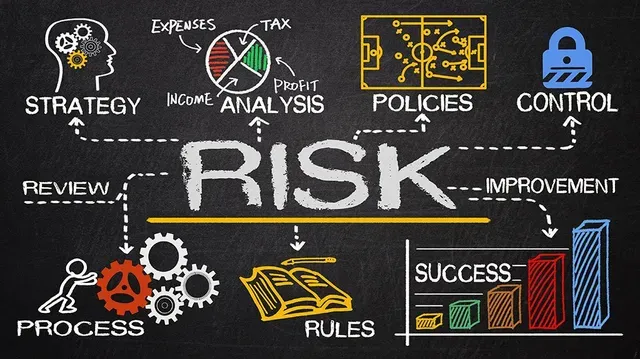Risk management is an essential aspect of running any business. It involves identifying, assessing, and addressing potential threats to your organisation that could disrupt operations, impact revenue, or damage your company’s reputation. For businesses, risks can come in many forms—financial uncertainties, market volatility, operational interruptions, cyber threats, or even natural disasters. While not all risks can be eliminated, effective risk management strategies can minimise their impact and help businesses recover quickly when issues arise. Understanding and implementing risk management practices is not just about protecting your business; it’s about ensuring resilience and paving the way for long-term growth and success.
Identifying and Classifying Risks
To manage risks effectively, it’s crucial to identify and classify them. Businesses need to take a proactive approach by evaluating internal and external factors that could pose a threat. Internally, risks might include process inefficiencies, a lack of employee training, or data breaches. Externally, they could stem from economic shifts, natural disasters, or changes in regulations. Classifying risks into categories like financial, operational, legal, strategic, or reputational helps prioritise actions and allocate resources appropriately. Every business will face unique challenges, so understanding which risks are most relevant to your industry forms the foundation of effective risk management.
Implementing Risk Mitigation Strategies
Once risks are identified and classified, the next step is to mitigate them through well-defined strategies. This might involve diversifying revenue streams to reduce financial dependency, introducing robust cybersecurity measures to combat data breaches, or establishing backup systems to ensure continuity during operational failures. Another crucial strategy that can mitigate the financial impact of unexpected events is the implementation of insurance policies. Mitigation strategies should be realistic and tailored to the specific vulnerabilities of your business. The goal is not just to defend against risks but to build systems and processes that minimise their likelihood and impact.
The Importance of Continual Risk Assessment
Risk management is not a static process. Risks evolve over time, and businesses must be adaptable to stay protected. Continual risk assessment involves regularly reviewing and updating your strategies to ensure they remain effective and relevant. This could include evaluating the performance of existing risk control measures, staying informed about new industry challenges, or adjusting plans in response to major business changes. By maintaining a dynamic approach to risk assessment, businesses can anticipate future challenges and be better prepared to respond to unexpected situations.
The Role of Technology in Risk Management
Technology has become an indispensable tool in modern risk management. With the rise of advanced analytics, artificial intelligence, and machine learning, businesses can predict potential risks and detect vulnerabilities more accurately than ever before. Software solutions are available to monitor market trends, track regulatory changes, and even provide early warnings for potential threats. Additionally, cloud technology ensures data is securely stored and accessible during crises, enabling businesses to continue operations without disruption. By leveraging technology, businesses can improve decision-making and streamline risk management processes, making the organisation more resilient to potential threats.
Case Studies of Effective Risk Management
Learning from real-world examples is one of the best ways to understand the importance of risk management. Take the case of a logistics company that implemented GPS tracking and weather forecasting tools to minimise risks related to delays and accidents. Those tools allowed the company to optimise routes and quickly reroute shipments during unexpected disruptions, saving time and money. Similarly, consider a retail business that transitioned to cloud-based sales systems after their physical store was damaged by flooding. This quick shift maintained operations while minimising revenue loss. These examples highlight how thoughtful and proactive risk management strategies can reduce disruptions and keep businesses moving forward, even under challenging circumstances.
Take the Steps to Protect Your Business
Risk management is no longer optional—it is a critical component of building a sustainable and resilient business. By understanding your business’s unique vulnerabilities, developing mitigation strategies, leveraging technology, and continuously reassessing your approach, you can protect your organisation from the many uncertainties that lie ahead. Act now to build a solid foundation that ensures your business is prepared to tackle risks effectively and maintain its competitive edge.




